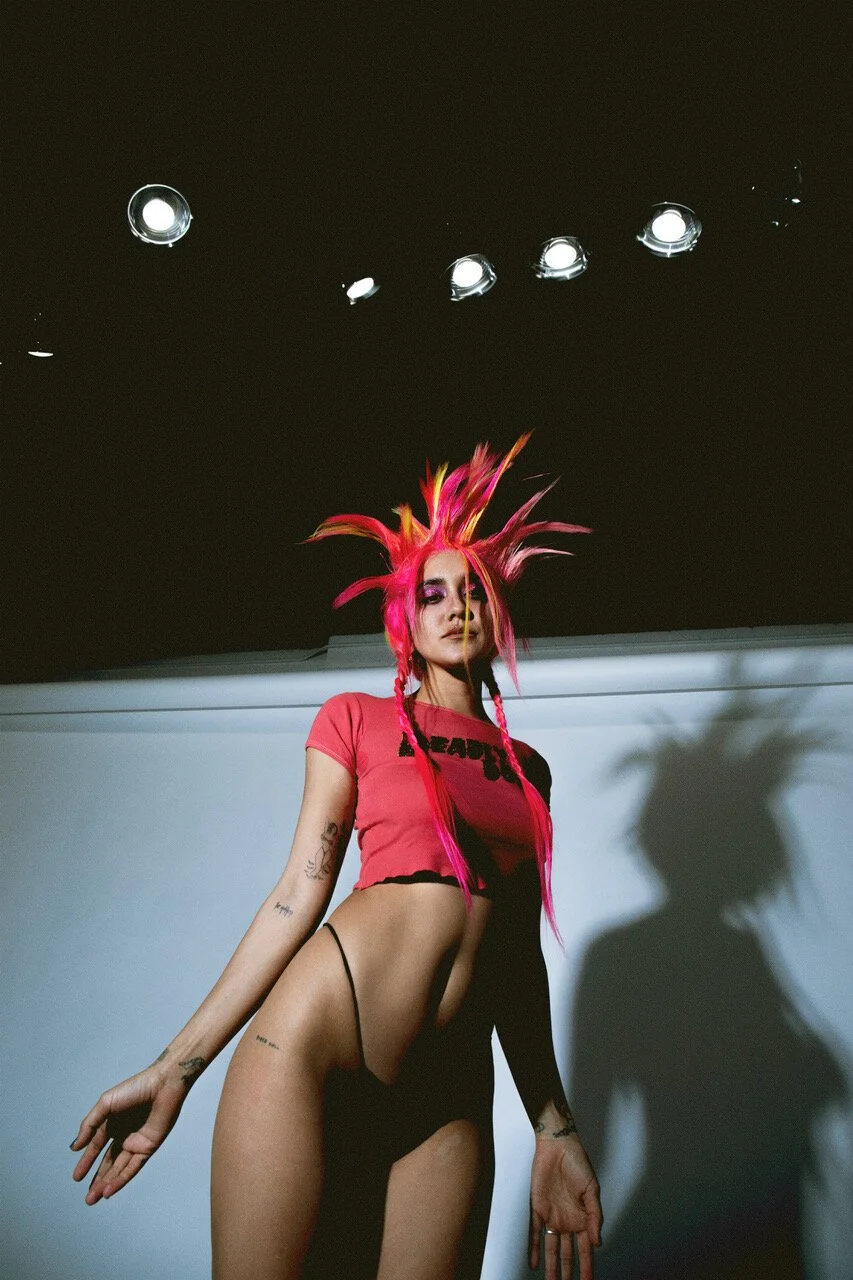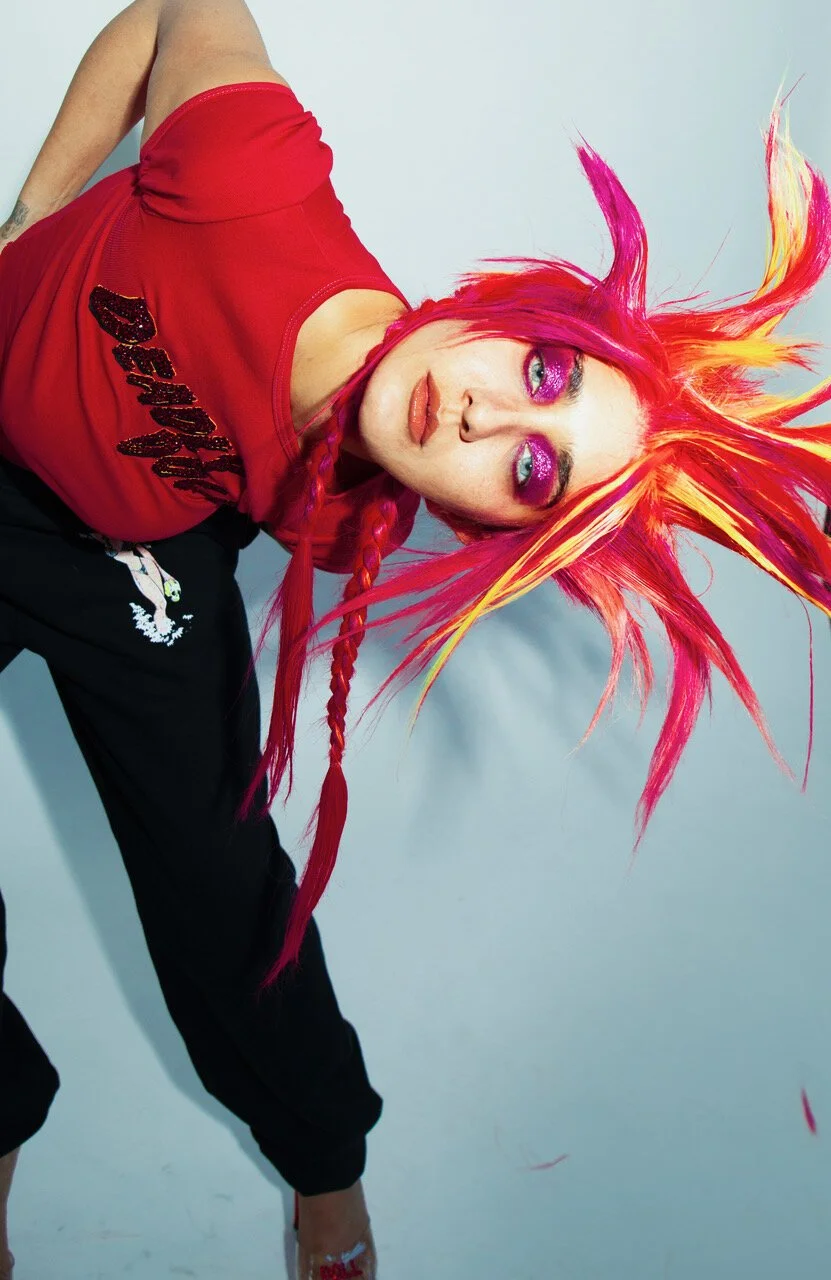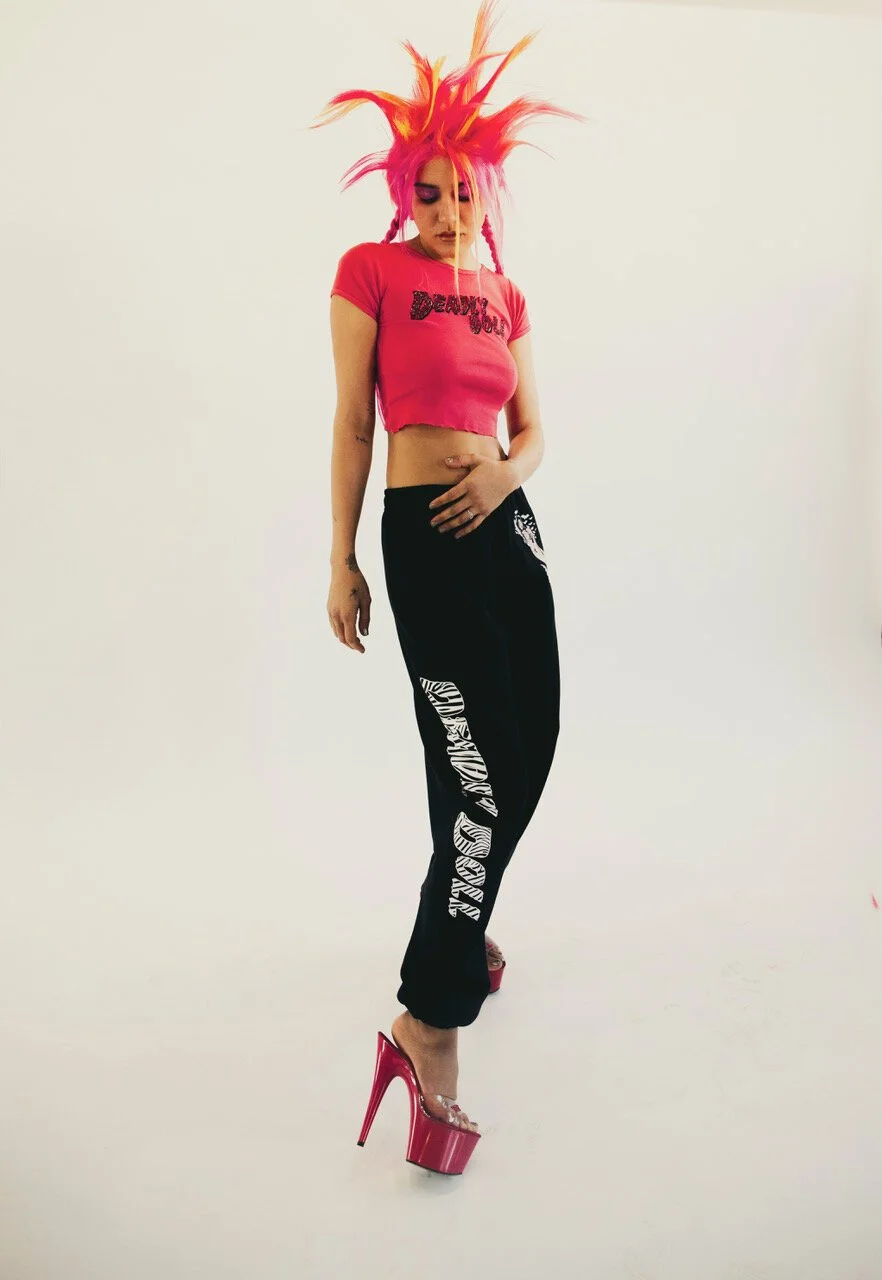Jesse Jo Stark’s Guide to Navigating Your Creative Process
No other industry has been impacted by side hustle culture more than the creative industry. Most creatives are multi-hyphenates, partially because of different outlets having different self-expression benefits, but mainly because the gig economy demands we become career chameleons - and it can be exhausting having to direct these different parts of yourself in creatively meaningful ways.
Jesse Jo Stark understands these difficulties better than anyone. 2020 not only saw her releasing the songs ‘Tangerine’ and ‘Die Young’, but also expanding her merchandise brand, Deadly Doll (named after one of her earlier songs). Working on these different projects has taught her the complexities of artistic fluidity and how to nurture creative channels so that practices stay fulfilling and authentic. As her new merch line for Deadly Doll drops and she prepares for her next venture, here’s Stark’s advice on navigating your creative process.
1. You Don’t Have to Separate Your Creative Outlets
Very few creatives have just one string to their bow, but how do you balance priorities between each creative outlet so that you can finish a project? And should you even have to disconnect them? Stark admits that having a singular focus is something “that's difficult for me some days”, but that projects don’t always need to be strictly separated.
___STEADY_PAYWALL___
“I have so many things I love. There are so many things that I spend my energy on, but for me, music and writing is the most important. So, when I start with a song idea and I have the lyrics and I finish my recording, that then bleeds into Deadly Doll.” Essentially, “Deadly Doll is just an extension of that initial idea.”
Still, it’s difficult when “turning [your creative work] into a small business and taking the emotional plunge into committing.” Stark continues, “For me, Deadly Doll was a happy accident. I think the hardest part is when people actually start to like it and now, you’re manufacturing and making everyone happy.” It can be stressful when people enjoy what you create, leading to a new and sustained pressure to produce content that people will continue to like. But Stark says that if you’re starting a business, to consider “starting small and not getting ahead of yourself and always staying true to what you bring to the table.”
2. Embrace Collaboration
Stark treats Deadly Doll as a platform for other artists and views collaboration as an important aspect to the creative process. She explains, “I want to amplify other artists and other creatives that maybe don't have the same platform. I want to always amplify other musicians, illustrators and painters and really extend that community.” It’s something that was especially important to Stark when collaborating with fellow musician and friend, Grace McKagan.
“I'm a true fan of her work. We grew up together and it came simply of her calling and saying, ‘I have this new single and I'd love to do a collaboration with Deadly Doll’. I just signed right on and we just did something small, something that my fans and her fans would love.” When it came to them working together, “I really sat back and listened to what she wanted. Even if it's a small little ‘X’ on the left sleeve, every little detail is important.”
At the core of the collaboration was a mutual respect for the others’ work that Stark believes should be pertinent for all collaborations: “Artists are really sensitive, and I think it's really important to listen to your collaborator and understand what they want to get across.” In the end, “a collaboration should be from both parties. It's not one sided.”
3. Make Time to be Alone
As much as collaboration is important, Stark emphasises the value of having her own space to be creatively fulfilled. “One of the most important things to me is spending time alone. It's a luxury to be alone. For me, just getting weird inside my house or my car or walking down the street and listening to music – that's when I am most inspired. Sometimes, it's so important to listen to your own opinion.” She enthuses, “And then the best part is, after you have all these crazy ideas, getting to share them with the people around you. I love the buzz of being busy, but I also love just playing music and dancing around your house alone. Cutting up papers, looking through books, lighting incense and just being inside of the art.”
Stark realises the pitfalls of this too: “I doubt myself, of course. I spin myself out all the time, but my gut is the most important thing to me. I think that we ignore it way too much. Sometimes, I think we ask for opinions because we want to disagree with them and so I think, though I might not always be right, instinct is so important.”
4. Break Your Own Patterns
That instinct can help when getting out of a creative rut too - specifically, by challenging it. When stuck in that rut, “I always say to try to do the opposite thing of what you've been doing.” Stark continues, “Sometimes I get so down on myself, or blocked artistically, and it's just because I get up in the morning and go and take a walk and turn right at the end of my street. And so sometimes in the morning I'm gonna say, ‘fuck it, I'm going to go left’ because obviously there's a brick wall standing in front of me and I can't get through it. I would say to just try to go the opposite way.”
Breaking your own patterns is vital. “I don't follow any rules”, Stark explains, “I don't love agreeing with things. It's something that my dad, [founder of fashion label Chrome Hearts], taught me. There is no right or wrong thinking. Not with everything, but I think it's important for everyone to just not agree. Go against the grain and try things […] I just get high from trying new things.”
5. Grieve and Celebrate Your Projects
Stark told me that she mourns her creative projects once they are over but there is power in allowing that grieving process to happen and sometimes, she even celebrates it. “I don't love change and I love things to last forever but they don't. I love to be a part of all these little projects, but being in the studio, being on tour, it's like a family.” Stark describes, “You create this little group and you're inside of each other for so long that when it ends it's definitely emotional. You need to celebrate something you've created and that's forever.”
That forever can exist when someone else adopts the product of your creativity - “For me, it's about community. The first thing about Deadly Doll, is when I started making merchandise it was just because I was touring, and I wanted everyone else to share: to have a little piece of me.”
In a time where we feel pressured to monetise our crafts, and in a pandemic where our access to community and resources has diminished, finding authentic, creative fulfilment is vital to an artist’s survival. Stark realises first-hand how precious the creative process is, especially when dividing yourself between outlets. Nevertheless, it also means she knows how to nurture and care for that process so that you can maintain your love for it.
Words: Charlotte Forrester | Photos: Trippy Dana | Clothing: Chrome Hearts and Deadly Doll




